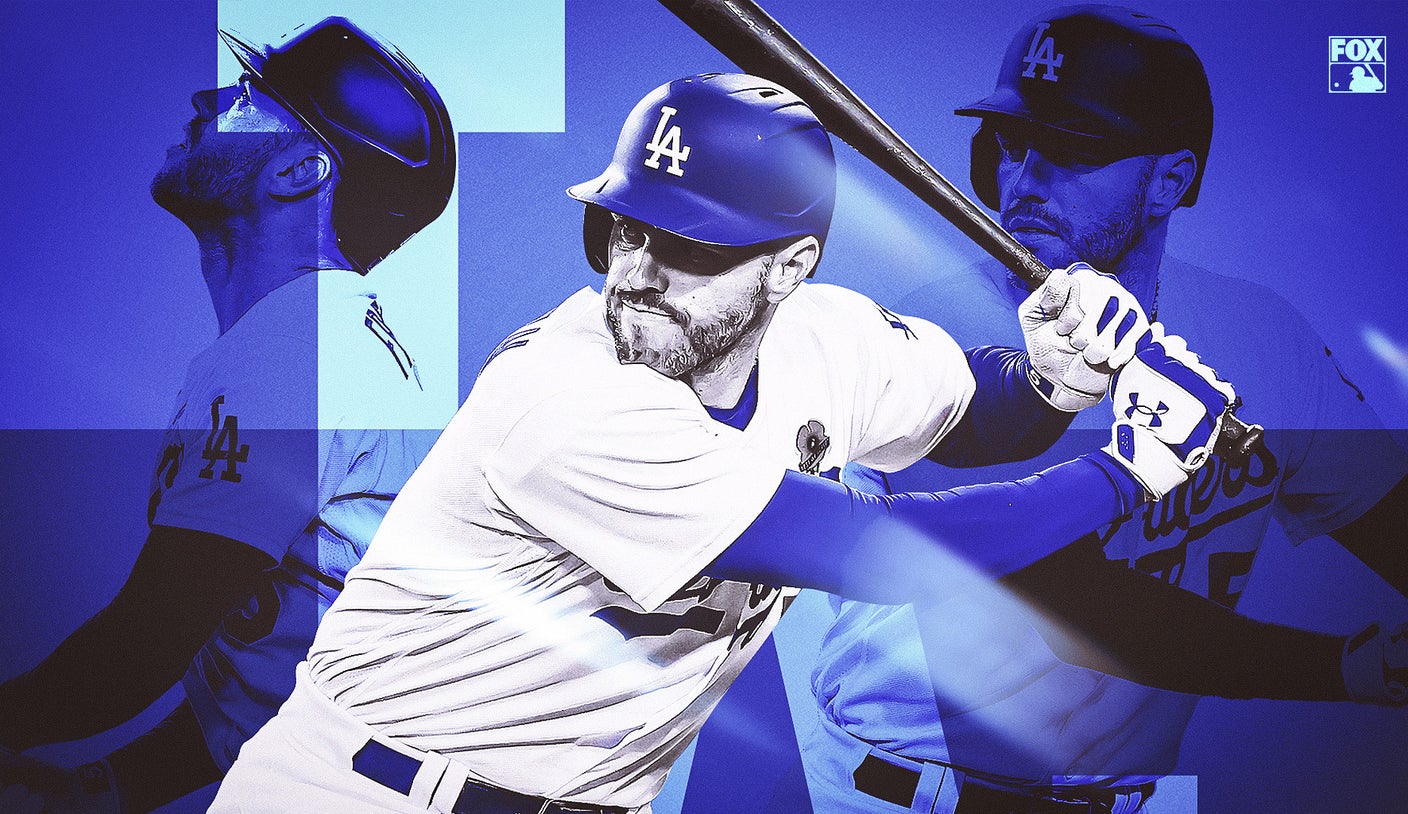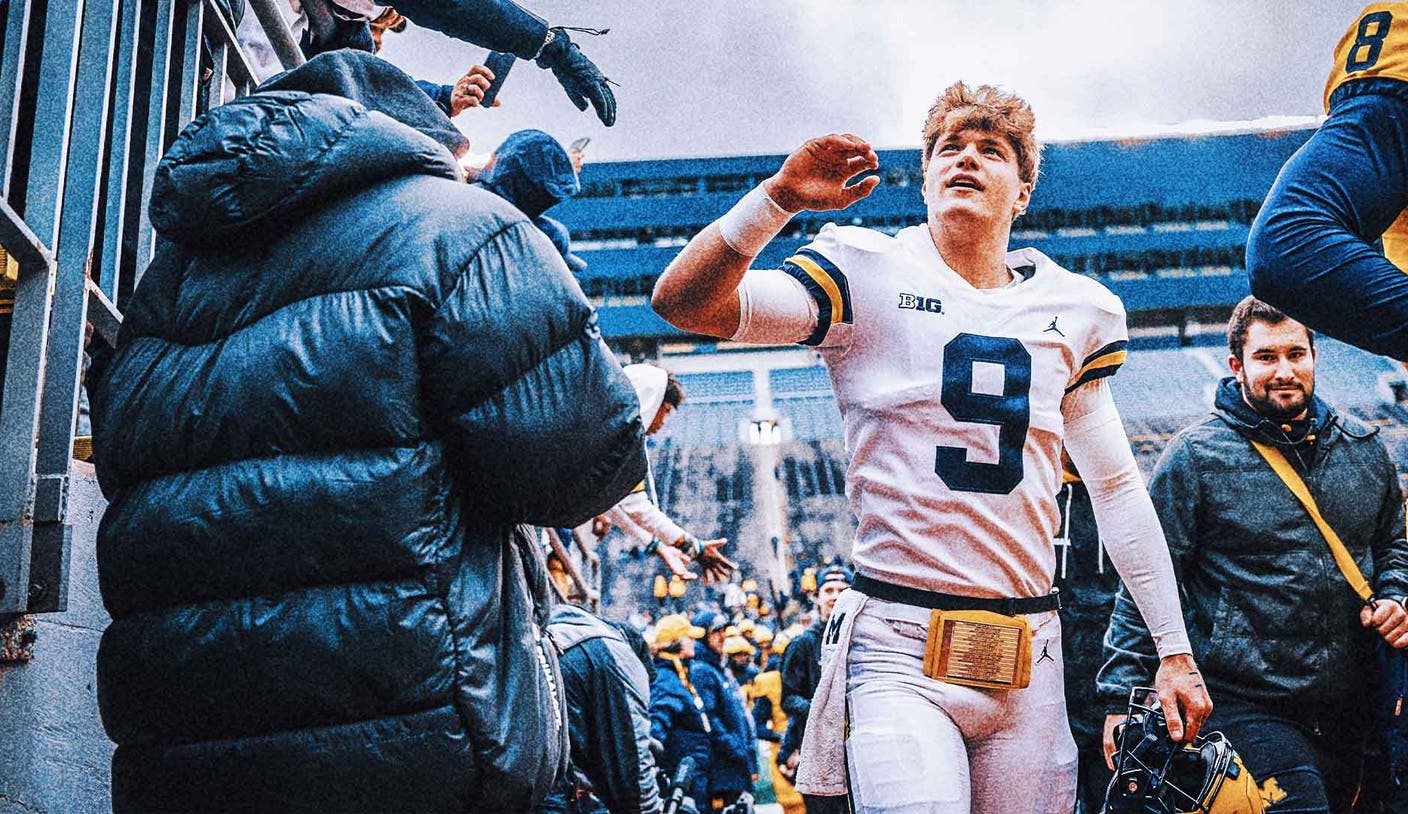
LOS ANGELES — To fully appreciate Freddie Freeman’s consistency on the field, you must first understand the meticulousness of the six-time All-Star’s routine and the self-described stubbornness of the former MVP’s approach.
He is stubborn before the game, planning each day down to the minute. He is stubborn once the game starts, insisting on the same spot in the dugout. He is stubborn at the plate, utilizing the same inside-the-baseball swing year after year, attempting to shoot line drives the other way. He does not deviate. He does not like when plans change. Similar to a pitcher on a start day, he prefers everything in order.
“It’s a Freeman trait to be stubborn,” the Dodgers superstar told FOX Sports. “You can ask my wife that. I’m very stubborn in my routine. I know how to get through 162 games pretty much healthy, able to conserve energy.”
It’s hard to argue with the results.
Freeman has hit at least 32% above league average every season since 2013. This year, he sports a National League-leading 168 OPS+. His admitted “stubbornness” allows him to calmly shake off the occasional hitless performance, though he hasn’t had one of those since May 9.
This weekend, Freeman will take a 20-game hitting streak into the NL-leading Dodgers’ home series against the surging Yankees, coming off a month of May in which he set a franchise record for extra-base hits (24) and doubles (17).
“He’s just as consistent of a player on both sides of the ball, every facet, that I’ve ever seen,” manager Dave Roberts said.
Since joining the Dodgers last year, Freeman has not gone more than three games without a hit.
But, regardless of how he performs versus New York this weekend (which includes Saturday’s prime-time game on FOX), the routine and approach that got Freeman here — the one that makes him far less susceptible to the ebbs and flows of a season that can frustrate most major-league hitters — won’t change. So, what exactly does that routine look like?
Freddie Freeman cranks solo home run in Dodgers’ victory against Nationals
It has changed slightly this year, only because his commute from Studio City is more manageable. Last year, Freeman drove 1.5 hours each way from Orange County to Dodger Stadium in a whirlwind first season after leaving Atlanta. Now, he can leave his house around 2:10 p.m. and get to Dodger Stadium around 2:40. Freeman tries to soak in as much time at home as he can get with his wife, Chelsea, and their three boys.
He is usually among the last to arrive at the stadium, where he has an hour to grab a snack, go to the training room and say hello to everyone before beginning his daily defensive drills in front of the dugout, picking short hops from third base coach Dino Ebel. After warming up his legs, he’ll start his first of three hitting rounds taking front flips. He’ll usually take 25 to 30 swings, but it could last as few as 10 or 15 if he feels right. That leads into the 3:50 hitters’ meeting, where every player discusses his approach for the day.
For Freeman, that’s easy.
“Most of the time, I’m just like, ‘Get a strike and hit it to left field,’” Freeman said.
It’s the same mentality that has worked for him since 2016, when Braves hitting coach Kevin Seitzer helped him fine-tune the mindset that would guide his thought process at the plate for the rest of his career.
In late April of that year, Freeman was batting .200. He got hot during the summer, raising his OPS near typical levels before hitting another lull. For a 20-game stretch in late July 2016, he hit .228. He felt like he was pulling off the ball. Seitzer suggested that Freeman practice hitting line drives to shortstop.
“David Ortiz did it, all these kinds of guys,” Freeman remembered Seitzer telling him. “I said, ‘OK, I’ll try.’”
Freeman adopted the strategy and stuck with it, even after another hitless performance dragged him into a 1-for-20 slump. The next day, it all clicked in St. Louis when he lifted a 448-foot blast off a changeup from Carlos Martinez. He took off from that point, finishing the 2016 season with a 157 OPS+, the best mark of his career over a full season. (In the 2020 truncated season, he hit 87% better than league average and was named MVP).
Since 2016, Freeman has produced a .945 OPS, a mark 113 points higher than the first six seasons of his career and one that ranks fifth overall in the majors behind only Mike Trout, Aaron Judge, Yordan Álvarez and Juan Soto. Of that group, Freeman is the only player also hitting over .310 in that span.
“I was just thankful enough that the new thing I did, I got results pretty quickly,” Freeman said. “And then I just honed it in. Just repetition, never deviating.”
That stubborn approach has yielded sustained success for him and continued bewilderment for the frustrated pitchers left exhausted by Freeman’s combination of patience and bat-to-ball skills. This year, that’s been especially true. The 33-year-old first baseman is combining a top-three batting average and slugging percentage in baseball with the lowest chase rate of his career.
On April 12, his relentless approach resulted in a run-scoring, 15-pitch walk that made Giants reliever Taylor Rogers deposit his glove in a trash can in a Dodgers comeback win. But Freeman’s approach is yielding power, too. He slugged .722 in May, finishing the month with four more hits and seven more extra-base hits than anyone in baseball.
“To be quite honest, I can’t even tell he’s on a hot streak,” Roberts said. “When he’s kind of struggling or not getting hits, it’s the same to me. I still think the at-bat quality, the quality of contact, is pretty similar. I guess right now you’re saying he’s on a hot streak, so I guess he’s on a hot streak, but he just seems like he’s Freddie.”
Freeman wasn’t always so certain and steadfast in his approach.
He used to try to pull homers to right field during batting practice without any thought to why. Early in his career, he was flooded with opinions from people telling him what he should do. It took time to sift through the noise. He needed to learn for himself what worked and what didn’t.
Now, there’s meaning behind all of his pregame work — every swing, every grounder, every drill.
“He’s very stubborn in the process,” Roberts said. “Players can say that, but when you get in that moment, there’s anxiety, there’s panic, there’s a results sort of effect on your mind, where Freddie just never deviates. It’s remarkable. It’s fascinating.”
He can live with the results, with an 0-for-4 day, knowing his routine will usually pay off; every year, it has.
Since 2018, Freeman has missed no more than four games in a season. In each of those years, he hit .295 or better. He has not had an OPS under .892 since 2015. Last year, his first as a Dodger, he led the majors with 199 hits and 47 doubles. This year, he leads the NL in both categories again.
“Father Time in a few years might catch up to me,” Freeman said. “But right now, my process, my routine, my stubbornness has paid off.”
When he does find himself getting out of whack, he knows the cues to return to normalcy.
Sometimes, he can “get too pushy” with his swing, trying to guide the ball to left field. When that happens, he’ll occasionally use his second round of hitting to focus on home runs to center field.
Sometimes, he has a tendency to bend over his hips too much at the plate.
“The only way you can come out of it is if you come up and out of that swing,” Freeman explained, “and that causes foul balls and rollovers.”
He can feel when he’s falling into that habit, but you won’t find him glued to a tablet or in the indoor cages trying to fix his flaws in-game. He likes to watch every pitch. Instead, the next day, he uses an L-screen drill to address the issue, hitting a ball through an 8-foot hole. The practice helps him stay upright in his stance.
“It’s just more of how I treat life,” Freeman explained. “My whole goal, every day, is if I can lay my head on the pillow and say I did everything I possibly could to give myself and my team the best chance to succeed, then I did everything I could.”
Freeman recognizes, however, that what works for him doesn’t work for everyone.
He encourages teammates, particularly young hitters, not to follow his lead but to stick to the approach that got them to this point — to not scramble for answers when results don’t immediately arrive.
“When you look at James Outman, who’s going through some struggles, he can look to Freddie and trust that process,” Roberts said.
It took time for Freeman to develop his approach, but his distinctive swing has never changed. That makes him stand out in a sport that often demands mechanical adjustments.
It also makes him the polar opposite of J.D. Martinez, the only teammate of Freeman’s with a higher slugging percentage over the past eight years.
“You go back, you look at 2014, ‘15, ‘16, ‘17, ‘18, ‘19, I have a different swing every year,” Martinez said. “It’s the most mind-boggling thing to me, and I just try to repeat the same swing.”
Unlike Freeman, Martinez had to overhaul his swing in an attempt to lift the ball more and find longevity in the big leagues. For a while, he tried to emulate other sluggers, until he realized the same thing Freeman did — that there’s no one-size-fits-all approach. Martinez can try to take bits and pieces from players he admires, but as he put it, “you can’t make everybody look like everybody.”
“You can’t look like Joey Votto; you can maybe take Joey Votto’s gather,” Martinez explained. “You can’t look like Ryan Braun; maybe you can get Ryan Braun’s finish. You can’t look like Miguel Cabrera; but, yeah, the way Miguel Cabrera loads his hands, little things like that. But you still need your ‘JD-ness.’”
For Martinez, that “JD-ness” is all about his gather, his hands and his transition. He knows what works for him — rigorous film study, constant adjustments to find timing and rhythm — is not the same for Freeman.
“Freddie, all you’ve got to do is make sure you have the Uber to get him to the ballpark,” Martinez said. “Guys like that, they’re natural. ‘Here’s the bat, go get ‘em, tiger.’ I wish I could do that, but that’s not me.”
Yet, together, in their own contrasting ways, the duo is pacing the NL’s top offense.
Martinez and Freeman rank first and second, respectively, as the NL’s qualified leaders in slugging percentage. Each carries a double-digit hit streak into the weekend, though Freeman’s routine wouldn’t fluctuate regardless. He is precise with his day and his three rounds of hitting.
After the hitters’ meeting wraps up, he’ll take ground balls on the field. That used to take place at first base, but since the defensive shift limits were put in place, Freeman now takes grounders at shortstop in an effort to improve his range and keep his feet moving.
Then comes the second round of hitting, which can occur either inside or outside, depending on how he’s feeling. When that’s over, he retreats to his locker to relax for an hour, often getting another snack and playing Roblox with his son Charlie.
The closer he is to first pitch, the stricter the routine becomes. At 6:51 p.m., he walks to the indoor cage for his third and final round of hitting. Usually, Mookie Betts and Miguel Vargas are hitting off a machine at that time. Freeman waits for them to finish, typically entering the cage at 6:56. He takes flips for two or three minutes before game time.
“There is nothing,” Freeman said, “that’s not planned.”
Sometimes, though, life makes you adjust.
Two years ago, while in Miami, he and his wife had cappuccinos delivered at breakfast. Chelsea handed him one, telling him it had a lot of hits in it. That day, he hit for the cycle. The next day, she ordered him another cappuccino.
“I’m not superstitious, I’m just a little stitious,” Freeman said, referencing the quote from “The Office.”
Freeman can tease himself about the scrupulousness of his routine, but he knows it works. He knows it’s not changing.
And he knows, as this interview wraps up, that it’s 4:30 p.m. on a game day.
“Got to go play Roblox,” he said, retreating to the dugout three hours ahead of a four-hit night.
Rowan Kavner covers the Dodgers and NL West for FOX Sports. He previously was the Dodgers’ editor of digital and print publications. Follow him on Twitter at @RowanKavner.

Get more from Major League Baseball Follow your favorites to get information about games, news and more







